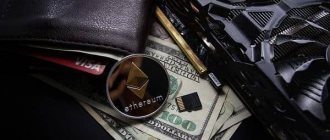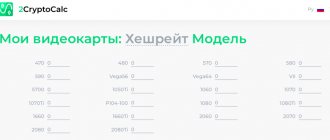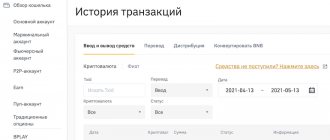During the period of devaluation, it is unprofitable for people to keep money in deposit accounts due to low interest rates, which cannot protect money from inflation. Therefore, many people prefer to buy currency, as its value is growing.
But at the same time, the stability of the financial system suffers: if clients do not place savings in deposits, then banks reduce the issuance of loans to borrowers, whose purchasing power decreases because of this.
But even in such a situation there are advantages.
During the reform, domestic production is developing, sales are growing, because it is becoming unprofitable for the population to buy imported goods due to a sharp rise in price.
For the country, the plus is that export revenues are growing, since revenue in rubles increases due to the depreciation of the exchange rate compared to hard currency. In this case, there is no need to spend gold and foreign exchange reserves.
What is devaluation
Devaluation
is a depreciation of the currency of one country in relation to the hard currencies of other countries. That is, to those whose purchasing power and exchange rate are stable. For example, it could be the dollar and the euro.
Thus, money depreciates and can buy fewer other currencies. Let's say a dollar costs ₽30. At this rate, ₽30 thousand can buy $1 thousand. But if the ruble collapsed and the dollar began to cost ₽70, then for the same amount you can only get about $428.
Devaluation and redenomination
Although the terms are similar, they should not be confused with each other.
Denomination
- this is a change, an update of banknotes to make it easier to pay with them. Banknotes and coins are changing denominations and their number in circulation is decreasing.
For example, ₽10 of the old model is exchanged for ₽1 of the new one, or ₽100 thousand turns into ₽100. The state carries out such an operation. This usually happens when a lot of zeros appear on banknotes after hyperinflation - a very high rise in prices, above 50%.
In Russia, the last denomination was carried out in 1998. Old banknotes were replaced with new ones at a ratio of 1000:1. This means that ₽1 thousand turned into a ₽1 coin, and a ₽500 thousand banknote became a ₽500 banknote.
At the same time, prices for goods and services do not change in proportion to purchasing power. Let’s say that some product cost ₽100 thousand, but now costs ₽100, but instead of ₽100 thousand, a person now has ₽100 in his wallet. Therefore, in fact, he can buy the same amount as before, only with the help of new banknotes.
Conclusion
Devaluation is the process of depreciation of the national currency. It can lead the country out of the crisis, solve the issue of increasing inflation, but at the same time, it can negatively affect the lives of the ordinary population. Review your expenses and stay updated on all economic developments.
“How do you personally assess the devaluation process? Did you discover anything new after reading the article? Write comments and don't forget to rate the article!
Rate this article:
[Total: 1 Average: 5/5] (Article Rating: 5 out of 5)
Author of the article Angela Karpacheva Freelancer
Devaluation and inflation
Inflation
is an increase in the general level of prices for goods and services, which reduces the purchasing power of money. That is, devaluation is when the dollar, euro and other foreign currencies become more expensive in exchange offices and banks, and inflation is when products become more expensive in stores.
For example, a year ago a person could buy two bags of groceries for ₽2,000, but now these goods have become more expensive and there is only enough money to fill one bag. In October 2022, inflation was 8.13%.
Inflation is indicated by the consumer price index (CPI), which measures changes in the cost of the consumer basket over time. It includes a set of products, non-food goods and services necessary for life. In particular, bread, clothing, shoes, housing and communal services and much more.
The consumer basket is reviewed periodically. In 2022, the CPI calculation included expenses on masks, hand sanitizers, nursing services, car sharing, subscriptions to online services, and more. Now Rosstat monitors prices for 556 goods and services every month.
Adviсe
- Devaluation should not be perceived solely as a negative phenomenon. If you are patient and vigilant, you can make good money by changing the course;
- During the period of devaluation, consumer interest in domestic goods increases, so entrepreneurs can be in an advantageous position;
- Crisis phenomena in the state are often accompanied by job cuts and mass layoffs. Take care of your own qualifications, increase your level of knowledge in order to remain an indispensable employee;
- You should not take out loans during periods of crisis; reconsider your needs and postpone plans for a while;
- Optimize your own expenses, review your consumer basket, and introduce a savings mode for a while.
Examples of ruble devaluation
1998 crisis
In 1998, the devaluation of the ruble was accompanied by a default. After the collapse of the USSR in 1991, the state had to look for ways to cope with the budget deficit, and for these purposes it began to issue government short-term bonds (GKOs). They were also sold to foreign investors.
The yield on such securities often exceeded 100%. However, in the end, the money from the sale of new GKOs was used to pay off the old ones. Later, Prime Minister Yevgeny Primakov and the head of the Central Bank, Viktor Gerashchenko, admitted that, in fact, the system of such bonds worked according to a financial pyramid scheme. By 1998, debts to non-residents exceeded $36 billion, and the Central Bank's reserves amounted to $24 billion.
A crisis was raging in Asia, and foreign investors began to withdraw funds from risky assets, including Russian ones. The fall in oil prices has hit the economy hard. The state was unable to fulfill its obligations under debt securities. The then President of Russia, Boris Yeltsin, assured that there would be no devaluation.
Nevertheless, in August 1998, the Central Bank switched from a floating to a free exchange rate of the ruble. For several years, the dollar remained in the currency corridor and did not exceed ₽6.25. After the introduction of a free exchange rate, by the beginning of September the dollar reached ₽21.
Ruble collapse in 2014
In 2014, the ruble fell by 41% against the dollar. The Russian currency has weakened due to the war in Ukraine, Western sanctions and falling oil prices. Russian President Vladimir Putin asked the Federation Council for permission to use Russian military forces in Crimea, and senators instantly and unanimously agreed.
In response, in July the United States and then the European Union announced “sectoral” sanctions that blocked Russian issuers’ access to cheap “long-term” Western money. Russian companies and banks could no longer take out loans in the West with a term of more than 90 days. They no longer had the opportunity to place new issues of foreign currency bonds and attract equity capital. “Sharply increased political risks and the “flight” of investors from Russia led to the depreciation of the ruble,” noted Andrei Maslov, an analyst at the Finam investment group.
Large exporters, such as Rosneft, were also hit by the fall in oil prices, as this meant a decrease in foreign exchange earnings. It might not be enough to repay the loans, and new loans could not be taken out due to sanctions. In the fall, exporters reduced foreign currency sales, and capital outflow increased. In Russia, demand for currency grew, but supply fell.
The Central Bank periodically sold foreign currency so that there was more of it on the market and the ruble did not depreciate too much, but this no longer helped. In November, the regulator introduced a floating ruble exchange rate. Panic grew in the markets. The Bank of Russia began to raise the key rate; by the end of the year it sharply raised it from 6.5% to 17%.
Currency intervention
- these are purchases and sales by the central bank of a country of foreign currency in order to partially or completely control the exchange rate of the national currency. Regulators carry out these operations using their gold and foreign exchange reserves.
Key rate
- this is the minimum percentage at which the Central Bank issues loans to commercial credit organizations. It affects rates on bank loans and deposits, inflation, as well as the ruble exchange rate.
When the key rate is low, banks buy foreign currency for rubles. As a result, a lot of rubles appear on the market, and the exchange rate of the national currency decreases. If the rate is high, then speculation in the foreign exchange market becomes less profitable. Banks buy rubles back, and as a result the ruble strengthens. In addition, the key rate affects the yield of federal loan bonds (OFZ). The higher it is, the more interesting such securities are for investors, including foreign ones, and the more the Ministry of Finance sells OFZ, the better for the ruble exchange rate.
In 2014, after raising the rate to 17% per annum, the Central Bank did not conduct a new intervention. Traders decided that the regulator’s refusal to sell currency means that the Bank of Russia is confident that the ruble will fall further. Oil became cheaper, demand for foreign currency was high, and the ruble fell.
Why is devaluation dangerous?
The depreciation of the ruble contributes to the growth of exports, since the exporter receives foreign exchange earnings - earns in foreign currency. The weaker the ruble, the higher the income after converting foreign currency earnings into rubles. As a result, the budget also receives more money from taxes. On the other hand, imports of foreign goods are decreasing, as they become more expensive in ruble terms and less competitive. Thus, the demand for local products is growing.
However, an increase in export competitiveness occurs with a moderate depreciation of the currency. Companies that receive foreign currency earnings also often buy equipment with foreign currency. “The devaluation one way or another hits the domestic economy and domestic consumption quite strongly. This leads to an increase in rates, in some cases can lead to defaults, and financial instability is quite strong,” said Egor Susin, Managing Director of Gazprombank for Private Banking.
Since devaluation reduces the value of money in relation to the currencies of other countries, it also affects those Russians who travel abroad. Let's say you are planning to go on holiday to Italy and want to take €500 with you for general expenses. If the euro exchange rate sharply rose from ₽60 to ₽70, and you did not manage to change the currency in time, then instead of ₽30 thousand you will need ₽35 thousand. Or you will have to reduce travel expenses.
Devaluation also leads to higher inflation rates. An increase in prices for imported products leads to an increase in prices for manufacturers who use foreign raw materials and equipment. Thus, the cost of imported goods and services increases and the purchasing power of the national currency decreases.
This reduces the real income of the population, that is, it reduces the standard of living. From the population's point of view, a currency depreciation is often a negative process
Egor Susin
Managing Director of Gazprombank Private Banking
Maslov also highlighted the decline in living standards. Since 2014, it has decreased by just over 10%, the analyst noted. He added that Russia, as an export-oriented country, benefits from a weak ruble. However, for the population, the problem of the falling ruble is primarily the problem of the lack of wage growth, which is largely related to the “middle income trap” into which the country fell in the 2010s. This trap means that when a country reaches the middle income level, its economic growth slows.
Main consequences
Devaluation can have both positive and negative consequences. The degree of control of the situation by the state plays a significant role. The main task when the ruble depreciates is to reduce the risk for small and medium-sized businesses. Negative aspects are most often associated with the following risks:
- inflation dynamics are increasing;
- mass transfer of savings into more stable foreign currencies;
- deposits are closed early;
- the volume of supplies of imported goods is decreasing;
- buyer activity drops significantly;
- Social benefits are being reduced.
The above indicators lead to a deterioration in the quality of life due to devaluation. In order to eliminate the negative consequences that have arisen, it is necessary to optimize the country’s own budget.
Positive changes
Devaluation, taking into account all the features, can also have a positive effect on the economy. First of all, there is an improvement in the balance of payments, and this is followed by stimulation of production and export of products. The level of consumption of gold and foreign exchange reserves is reduced several times, but at the same time the competitiveness of national goods or services increases.
If the mitigation policy is implemented correctly, it is possible to achieve an artificial decrease in the value of foreign currency. In this case, the money supply will be returned to non-cash accounts. The population, in turn, will begin to purchase Russian goods for rubles.
What will happen to loans and mortgages if devaluation occurs?
According to Maslov, all banks have a balanced portfolio of assets, which should still remain relatively stable in the event of ruble devaluation. “Payments on ruble mortgages will not change dramatically, but foreign currency mortgage holders would certainly suffer in this case,” the analyst noted. In his opinion, it is not very advisable to take out a mortgage in a currency in which you do not have income or significant savings.
If you took out a mortgage in dollars, and the ruble exchange rate against this currency has fallen significantly, then the overpayment will increase, as will the monthly payments. If you have already been paying off such a mortgage for several years, but devaluation occurred, then the remaining debt may exceed the cost of the apartment in rubles.
Susin said that devaluation leads to higher rates and the inability to refinance loans. When the Central Bank key rate is low, loans become more accessible, and when the key rate is high, vice versa. In 2014, when the Bank of Russia increased the rate to 17% per annum, banks also increased interest on loans. Mortgages began to be issued at 17–20% per annum. However, the rate on mortgages and other loans you have already taken out cannot change unless it is variable.
Interventions
We noted that devaluation in simple terms is a reduction in the price of a currency , and revaluation is an increase in price. Both of these problems are usually solved globally, but there are also temporary measures that can reduce the activity of speculators. Such measures include changes in monetary policy, for example, lowering or increasing the discount rate. But there is a more obvious way - currency intervention. The Central Bank is taking the following actions:
- In the event of devaluation of the national currency, the Central Bank sells a large amount of foreign currency on the domestic market, thereby supporting the demand for the national currency.
- In the event of revaluation, the Central Bank buys a large amount of currency, weakening the national currency. The Swiss National Bank and the Central Bank of Japan are very well known for such actions.
But these are all temporary measures; usually, the movement of a currency in one direction or another is slowed down using a whole set of measures; in extreme cases, open devaluation is carried out.
Strengthening the franc and combating this phenomenon
How to save money during ruble devaluation
“In the wake of the popularity of personal investments, a good idea is to keep some of your savings in a brokerage account, invest in protective assets and foreign companies for better diversification,” Maslov believes.
Since the 1990s, many people in Russia have kept part of their savings in dollars or euros, which also increases the stability of personal capital during periods of severe instability, the analyst noted. According to Susin, over the past year and a half, the propensity to save in foreign currency has increased among both businesses and the population. In addition, the state also keeps its savings - reserves - in foreign currency.
Maslov believes that saving money during devaluation is possible only through advance diversification. Diversification is the distribution of funds across different assets to reduce the risk of losing money. Another way to say this is that you shouldn’t “put your eggs in one basket.”
“The advice for the ordinary investor is simple - diversify savings by currency: keep part of the funds in rubles, part in dollars, part in euros. In each of these parts, conservative debt instruments can be purchased. Rates on ruble OFZs are already above 8%,” recommended Albert Koroev, head of the expert department at BCS World of Investments.
Vladimir Bragin, director of analysis of financial markets and macroeconomics at Alfa Capital, noted that changes in exchange rates can be very serious. However, there is no need to treat every exchange rate fluctuation as a reason for some sudden movements, purchases or sales of assets. As practice shows, the more often a person makes them, the lower the purchasing power of savings becomes, that is, the less a person can afford goods and services with his savings.
According to Bragin, devaluation and inflation are not dangerous if you invest in assets for the long term. For example, in stocks. Their profitability can overcome the impact of currency depreciation.
Devaluation-inflation spiral
Devaluation and inflation are related processes. During devaluation, the exchange rate of foreign currencies relative to the ruble increases, and during inflation, food prices increase. One of the consequences of devaluation is a devaluation-inflationary spiral.
There are states that live by selling resources abroad. There is not enough money in the budget, so governments decide to carry out devaluation in order to increase revenues. Import prices are increasing, as are prices for domestically produced products. Inflation is rising, living standards are falling, and there is not enough money in the budget.
States begin to devaluate again. The procedure occurs several times - a crisis begins, which develops in a spiral.











